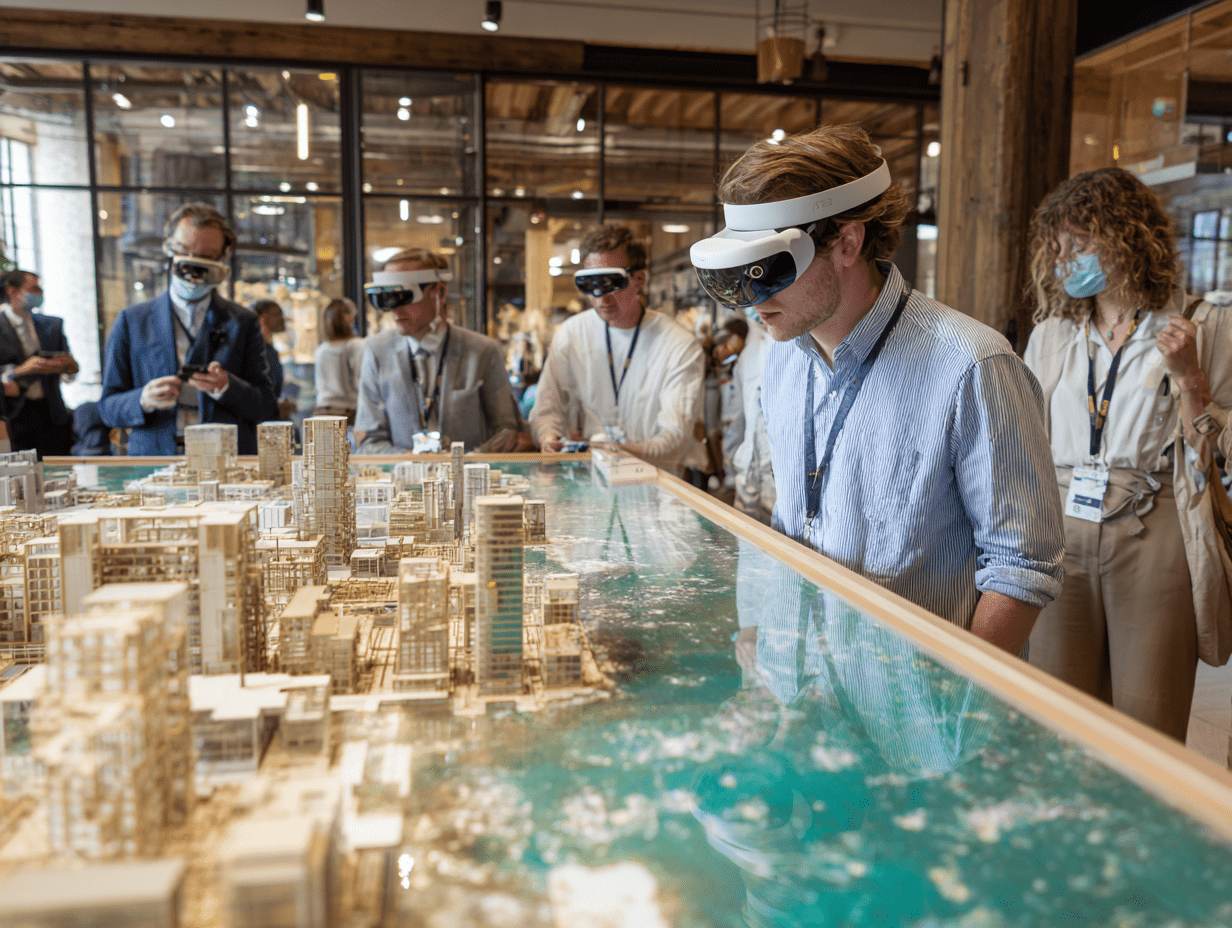- Home
- Articles
- Architectural Portfolio
- Architectral Presentation
- Inspirational Stories
- Architecture News
- Visualization
- BIM Industry
- Facade Design
- Parametric Design
- Career
- Landscape Architecture
- Construction
- Artificial Intelligence
- Sketching
- Design Softwares
- Diagrams
- Writing
- Architectural Tips
- Sustainability
- Courses
- Concept
- Technology
- History & Heritage
- Future of Architecture
- Guides & How-To
- Art & Culture
- Projects
- Interior Design
- Competitions
- Jobs
- Store
- Tools
- More
- Home
- Articles
- Architectural Portfolio
- Architectral Presentation
- Inspirational Stories
- Architecture News
- Visualization
- BIM Industry
- Facade Design
- Parametric Design
- Career
- Landscape Architecture
- Construction
- Artificial Intelligence
- Sketching
- Design Softwares
- Diagrams
- Writing
- Architectural Tips
- Sustainability
- Courses
- Concept
- Technology
- History & Heritage
- Future of Architecture
- Guides & How-To
- Art & Culture
- Projects
- Interior Design
- Competitions
- Jobs
- Store
- Tools
- More
Impact of AI on Architectural Skills: Threat or Opportunity?
Explore the transformative influence of AI on architecture, from design to management, with this insightful article. It articulates how AI can augment traditional architectural skills rather than replace them, also highlighting the urgent need to include AI education in architectural curricula.

In the ever-evolving landscape of modern IT, technical architects stand as crucial linchpins, designing solutions that meet both business and customer needs. They’re the maestros behind the blueprint of an organization’s IT infrastructure, with expertise spanning software development, network infrastructure, and cybersecurity. But as we move forward, there’s a new player in the orchestra – Artificial Intelligence (AI).
Recent studies suggest that AI could significantly impact the economies and tech-based roles of several countries within the next five years. For technical architects, this could mean a shift in demand and an imperative to adapt. How will AI reshape the role of the technical architect? Let’s delve into the future of architectural skills in the AI era.

Table of Contents
ToggleThe Rise of AI in Architecture
The emergence of AI in architecture is ushering in remarkable changes and offering innovative solutions. The technological advancements tied to AI are transforming not only the design process but also influencing aspects like cost efficiency and project management. Making architecture more precise and data-driven, AI offers a new way to perceive and construct our built environment.
Current Applications and Tools
Today, 46% of architects utilize AI tools for their projects, with another 24% intending to incorporate these technologies soon. Automation, one of the current applications of AI, goes beyond simple task execution. These tools can sift through copious amounts of data, assimilate knowledge and adapt to deliver optimized design solutions. Architects are using AI tools to create designs that are not only visually pleasing but also structural sound and resource-efficient. AI also predicts potential challenges during the early design phase, making the construction process seamless and more predictable.
Impact on Architectural Skills and Creativity
There’s a mixed response regarding the impact of AI on architectural skills and creativity. On one hand, there’s a rising concern about AI, triggering job displacement in the industry. On the other hand, others recognize its potential value and time-saving advantages that AI brings to the table. Furthermore, architects who synergize human creativity with AI capabilities are likely to emerge as industry leaders, shaping the future of architecture.
The rapid integration of AI into the architecture field underscores the importance of understanding and embracing these technologies. While AI dramatically speeds up processes and enhances efficiency, it is critical to remember that AI serves as a tool to augment human capability, not replace it. Consequently, the future of architecture appears to be not a competition, but a collaboration between human architects and their AI counterparts.
The Pros and Cons of AI for Architects
Streamlining Design Processes
AI-powered tools significantly enhance the design process, offering architects a competitive edge. One key advantage lies in the ability to swiftly generate varied design options. For instance, these tools can analyze complex data, optimizing building performance – a process that ordinarily takes a significant amount of time if done manually. As a result, architects can speed up the decision-making process, leading to innovative and sustainable designs.
Moreover, AI assists architects in simulating various scenarios to predict environmental impacts, optimizing energy efficiency. This contributes to environmentally friendly structures aligning with the global emphasis on sustainable practices in architecture.
However, one concern surfaces – the potential for AI to automate design processes, thereby limiting the creative aspects of an architect’s work. AI’s role in architectural design leads to a debate over the future of architectural skills, as critics argue that it might lead to job displacement in larger firms. Yet, advocates maintain that AI as a tool enhances human capabilities, not replaces them, suggesting a collaborative future between architects and AI.

Predictive Analysis in Construction Process
AI streamlines the construction process as well. Through predictive analysis, architects and project managers can anticipate and address potential challenges before groundwork begins. This proactive approach to maintenance, enabled by AI, reduces future costs, and ensures the longevity of buildings in a changing world.
Enhancement of Efficiency
Efficiency is a notable advantage of AI’s role in architecture. AI enables architects to accomplish more within a shortened time frame. The trial-and-error method of design is replaced by simulations running in parallel with the initial design phase, thereby refining and validating concepts in real-time. This approach minimizes wastage of resources and curtails a building’s environmental footprint. With intelligent design, buildings can be better tailored to their environment, utilizing natural energy sources to decrease reliance on non-renewable ones.
Despite the clear advantages, critics continue to express concern about the potential effects on employment. The fear is that as AI becomes better, the sizes of architectural firms would decrease over a period. However, others argue that in the short term, AI would not remove jobs, but rather, it could give smaller firms a competitive edge.
Future Trajectory of AI in Architectural Practice
As AI integrates into architectural practice, it’s important to consider potential changes to the profession and the expectations of upcoming generations of architects. Digital advancements redefine norms in architectural planning, construction, and maintenance, marking a new epoch in the field.
Upcoming Trends and Innovations
With the proliferation of AI, a rise in data-driven design is expected. AI applications will simplify mapping the correlation between multiple factors. For instance, optimization algorithms can parse data, considering variables such as aesthetics, efficiency, structural stability, and more. It results in designs optimized for both form and function – the epitome of architectural acumen.
New modeling tools might also gain prominence, presenting architects with a varied palette of design possibilities. These tools harness the power of generative design – an AI tool that generates myriad solutions based on given parameters.
Further, predictive models using AI might become integral to cost prediction and construction planning. McKinsey points out that integrating AI could lower construction costs by nearly 20%, potentially disrupting traditional construction practices.
Another significant breakthrough might be AI’s ability to simulate environmental scenarios. This feature could dramatically enhance long-term building sustainability by forecasting a structure’s response to changing climate conditions.

Preparing for a Collaborative AI Workforce
Though the rise of AI in architecture triggers the fear of job displacement, the viewpoint is not universally shared. Many observe that AI ultimately enhances human capabilities rather than replacing them.
Preparing for a collaborative AI workforce involves several significant shifts. First, with AI taking over routine tasks, architects gain the freedom to engage more creatively. However, this demands a paradigm shift, seeing architects harness these tools for creative magnification rather than viewing them as potential threats.
Education and training are key to this shift. Future architectural education may see an increased emphasis on data literacy and computational design. Additionally, there’s a need for early exposure to AI tools, enabling future architects to harness them deftly and creatively.
In effect, by appropriately leveraging AI, architectural practices may streamline their processes, resulting in designs that are more efficient and aesthetically pleasing. More importantly, it presents an opportunity to revitalize the profession, opening avenues for increased creativity and innovations.

Educational Adjustments for AI Integration
Given the increasing role of AI in architectural practices, it becomes essential to imbibe AI-related teachings in the current educational framework of architecture. It’s vital that architects, while learning about design and construction aspects, grasp the concept, and functionalities of AI to cohesively work with the technology in the future.
Adapting Curriculum to Include AI Competence
Given the advancement in technology, AI represents a massive shift in architectural practices. To successfully navigate this change, it’s critical to foster AI competence among budding architects, which starts with curriculum adjustments.
The adaptation isn’t about transforming architects into programmers; rather, it’s about equipping them with a fundamental understanding of AI and its application in the architectural field. For instance, educating students about various AI tools and technologies, their implications for design processes, and the value they can add. Also, updating curricula to incorporate AI software tools practical learning would aid in familiarizing students with the AI workings.
In addition, integrating computational design and data-driven decision-making subjects into the study schema can imbue students with the proficiency to combine design skills with AI capabilities. As a result, architects will be equipped to innovate and streamline the design processes effectively, promoting more efficient architectural practices.
Definitely, such curriculum adjustment calls for a structured approach, emphasizing theoretical knowledge, hands-on experience, and essential soft skills. For example, familiarity with programming languages, experience with database management systems, understanding of data compliance requirements, or project management skills, among others.
Furthermore, it’s vital to impart foundational knowledge on ethics in AI use, addressing issues such as data privacy. Ethical considerations will form a significant part of where AI is headed in architecture, and it’s crucial that future architects understand this.
In essence, the goal should be to create a generation of architects who can effectively leverage AI in realizing their creative visions, without being bogged down by technological complexities. Thereby, paving the way towards an optimized, AI-integrated future in architecture. Hence, adapting the curriculum to include AI competence is the inevitable way forward.

Conclusion
In the rapidly changing landscape of architecture, AI continues to reshape traditional practices. Architects now find themselves at a crossroads, merging traditional architectural skills with AI. Notably, this synergy between AI and traditional architectural skills promises an exciting era for the architectural profession.
From designing to planning, AI infuses efficiency and accuracy into these processes. Predictive analytics, a noteworthy AI application, now assists architects in evaluating design feasibilities. It’s this combination of data-driven decision-making and architectural creativity that sets the pace for futuristic design processes—a synergy we can’t ignore.
However, bringing AI into architectural practices isn’t a walk in the park; it demands a significant shift in educational paradigms. To foster this pivotal transition, architectural curricula now must include modules on AI applications, computational design, and ethical considerations pertaining to AI utilization. It’s essential that architects understand and embrace AI to leverage its full potential duly.
Moreover, adapting or even replacing traditional architectural methods with AI doesn’t necessarily mean the extinction of these time-honored practices. Rather, AI complements and augments these age-old skills, making them more relevant in the face of unbeatable technology. Training seasoned architects to synergize AI with their well-established practice offers another solution to this discerning shift.
Beyond doubt, the call for AI competence among architects is platonic. AI figures prominently as a boon to architects, enhancing their capabilities and skills. Considering an annual salary of approximately $96,000 for technical architects in the US, this increased demand and transformational role of AI surely binds the profession with a promising future.
Revolutions, indeed, come with challenges—the AI imbroglio in architecture isn’t an exception. However, with firm commitment and openness to embrace AI, architectural education can brace itself for this paradigm shift. Together, we can foster a new generation of architects—dexterous in traditional methods, yet fluid in the use of AI, steering the architectural profession towards a future integrated with AI.
Submit your architectural projects
Follow these steps for submission your project. Submission FormLatest Posts
AI Tools Reshaping Architectural Modeling Processes
AI tools in architectural modeling: see how generative massing, BIM automation, and...
Best AI Tools for Architects: Make Architectural Design Easier
Artificial Intelligence is reshaping architecture. Discover the best AI tools that help...
Revolutionizing Spaces: AI in Architecture of the Future
Discover how artificial intelligence is reshaping the future of architecture in this...
Transforming AI in Architectural Design: Boosting Creativity and Efficiency for the Future
Discover how artificial intelligence is revolutionizing architectural design in our latest article....












Leave a comment